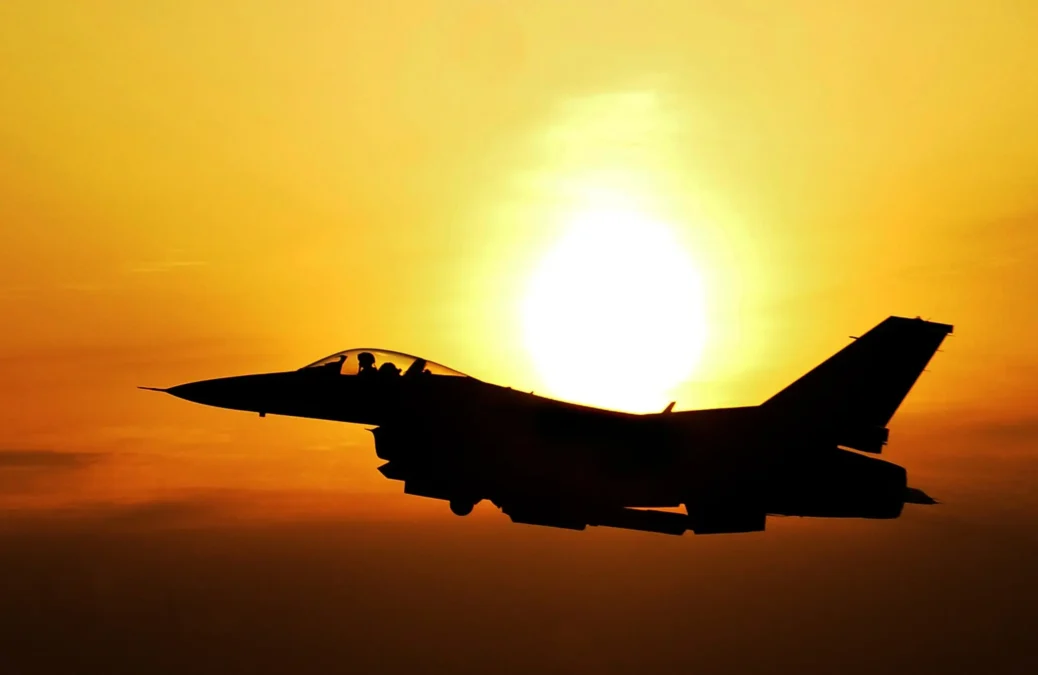When I grew up, I dreamed of being a fast-jet pilot. So, when I went to a career fair at high school, I went straight to the Royal Air Force to apply to join. Unfortunately for me, due to my age at that instance, they told me to come back in a couple of years. Slightly deflated, I wandered over to the Army stand. The enthusiastic Captain manning the stand bombarded me with leaflets and opportunities. Hence, in one of those small but life-changing quirks of fate (or providence), I ended up in the army, not the air force. However, I still ended up being taught some of the pilot’s decision-making processes; as we shall see shortly.
Since leaving full-time military service I have worked in, and with, start-ups as well as being a creative and entrepreneur in my own right. And what I see is that there are some surprising similarities between the decision-making of fast-jet pilots and savvy entrepreneurs. As well as being highly driven and comfortable with risk, both must make a string of rapid choices as they manoeuvre in rapidly changing circumstances.
So, you may be at the helm of a computer rather than at the controls of a fighter jet, but I will share some lessons that will help you get ahead of the competition and set you up for better, quicker, decisions.
Be a Maverick
My love of fast jets did not die with my change of career direction. It lived on in another passion: movies. I might not have become a pilot, but I still loved films about flying. And which movie comes to mind first when you hear the words “fast jet pilot?” Probably the original Top Gun movie with Tom Cruise.
So, while we wait for the endlessly delayed Top Gun sequel (Top Gun: Maverick) to be released, how about some lessons from the real Top Gun school. Yes, it really exists!
If you have seen the first Top Gun (1986), you will remember the crazy (and cool) manoeuvre that Maverick (Tom Cruise) pulls off. He is trying to shake an enemy MiG plane that is tailing him. Maverick can’t outrun it so he does the unexpected; he applies the air brakes (thereby rapidly slowing the jet) so that the other craft rushes past before the adversary can react. Maverick ends up behind the MiG and can now attack himself.
What did he do? In cognitive terms, he got within his opponent’s decision-making cycle and therefore outmanoeuvred them. This is something that pilots are trained to do, but it was not always the case.
The genesis of Top Gun and rapid decision-making
In 1968 the United States had a problem. They were losing. Putting aside the larger strategic problems of the Vietnam war, they were also losing at a tactical level in the skies over North Vietnam. The most powerful nation on the planet, with their cutting-edge F-4 Phantoms, was losing to MiG fighters. They tried upgrading the F-4, but that did not solve the issue.
They concluded there must also be something about the pilots as well as the hardware, and therefore, in 1969, a new school was established at Miramar to study and teach new tactics. The United States Navy Strike Fighter Tactics Instructor programme (the TOPGUN school) was born. It turned around the kill-to-loss ratio in the skies above Vietnam. The United States started to win there (if not everywhere).
Key to the success of the school was the work of Air Force Colonel John Boyd. He studied pilots in their dogfights, analysing their decision-making processes. The result of his study was something called the OODA loop.
The OODA loop decision-making process model
OODA loop is a decision-making process. It is a 4-step model with OODA standing for: observe, orientate, decide, act.
Remember back to Maverick in the dogfight. He observed the enemy craft on his tail, orientated himself to the options he had available, decided to slam on the brakes, acted quickly, then started over again; observing his new position, orientating himself and acting decisively to bring the other jet into his crosshairs.
But let’s look at each step in more detail:
Observe
Observing is about situational awareness. It is the ability to gather data but, most importantly, to spot important information. This is a challenge at any time but particularly in a fast-moving situation when there are a plethora of inputs clamouring for your attention.
For the entrepreneur, the situation may not evolve as fast as duelling aircraft, but the principles still apply. In the rapidly changing and congested information space of business, it is vital to observe the critical data. That still requires situational awareness and, as with the flying environment, this ability gets better with practice and experience.
Orientate
Once vital information has been observed the next step is to orientate yourself to the factors. In psychological terms, we engage our System 1 (intuitive and fast) and System 2 (rational and slower) cognitive processes.
Neurons flare to process the data and try to make sense of what was observed. The brain seeks to identify the factors that are important and what influence they might have on the situation. Some of this happens automatically and sometimes we need to actively engage our brains.
Our experience, heritage, biases, heuristics, values, and logic all impact the way we consider the information. Not only that, but experience, training and practice make synapses fire faster to provide more, and better, options.
Decide
Having orientated to the relevant factors the next step is to decide on the best course of action.
In contrast to a pilot, an entrepreneur might not have formal training or simulations to help improve their decision-making. Therefore, it is their experience that counts most. But not all experience is equal. To properly learn from our experiences – and to make better choices – we need to reflect on our actions and analyse our decisions. If we do this and seek to understand how we did things right, or wrong, then we turn an activity into what Robert Pool and Anders Ericsson (authors of Peak) call deliberate practice. This is the key to high performance and becoming world-class at something. It is an experimental as well as experiential process but one that requires focus.
Act
Once the best course of action has been decided, it is time to act. It is the action that creates change. Whatever the judgement, the outworking has consequences. The chosen action will prompt changes to the situation. These changes in the environment (be that an enemy, competitor or customer) can then be observedand the loop begins again, prompting new decisions.
It is important to remember that deciding to do nothing is still an action. By doing nothing you cannot avoid consequences. A pilot can choose not to change his course, even if there is an enemy on his tail. Similarly, a business might observe changes in the market but may choose not to update their product or adapt their service. Whether that is the right decision will only be seen in the aftermath.
Faster decision-making
John Boyd’s aim, in developing the OODA loop, was to enable ways of speeding up the decision-making process. Through new training and procedures, it was to enable pilots to operate at a faster tempo than the enemy – to get within their decision-making cycle – and thereby defeat them.
The timeframe might be different – days and weeks for creatives rather than seconds and minutes for a pilot – but for the entrepreneur, it is also important to be ahead of the competition.
Of course, this is not only true for small businesses. It was a big organisation, the USAF, that started to lose out to the ‘small guys’ before they realised they needed to change their approach. In the same way, larger corporations are adopting the lean business techniques of the start-up.
The lean start-up
The lean start-up, a concept popularized by Eric Ries, captures the same spirit of the fast jet pilot. The learn-build-measure cycle of the lean start-up shares the same aim as the OODA loop; to speed up effective decision-making in order to give a competitive edge. This approach also has similarities to deliberate practice; it is a responsive technique, where future actions are dependent upon how they are assessed and how the new knowledge is applied for the next course of action.
This approach has been captured more formally in agile project management, but again the underlying principles are the same: remain flexible, act but then get feedback and prepare to adapt and move again. In this way, it contrasts to traditional project management where the processes to manage change within an existing plan are sluggish.
Avoid the ejector seat
Whether you are a pilot or entrepreneur, you are less likely to need the ejector seat if you can stay ahead of the competition in your decision-making. To do this you need to observe what’s going on, orientate to the circumstances, decide on an option, and then act. And once you have acted the loop starts again as you observe and measure the results of your actions to inform your next choice.
But remember, Top Gun pilots are not made overnight, and neither are successful start-ups. Entrepreneurs keep experimenting and often fail. They might have to even pull the eject handle occasionally; but they keep learning, improving what they do and going again.
So, strap yourself in and power up your computer. It’s time to buzz the tower!
(And hello to Jason Isaacs.)



